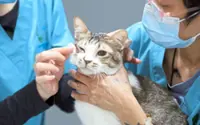The snails enjoying one another’s company. Photo: Hayley Poh
Do you have an interesting story about your pet that you would like to share with readers? Tell us in 600-800 words (in Text or Word format), with three to four photos (1MB, in JPEG format, captioned). There is no payment for submissions. We reserve the right to edit all submissions. Email: lifestyle@thestar.com.my with the subject 'My Pet Story'.
We found them in the market-bought choy sum, ranging from the size of a bean to one as large as my thumb.
Already a subscriber? Log in
Save 30% OFF The Star Digital Access
Cancel anytime. Ad-free. Unlimited access with perks.





